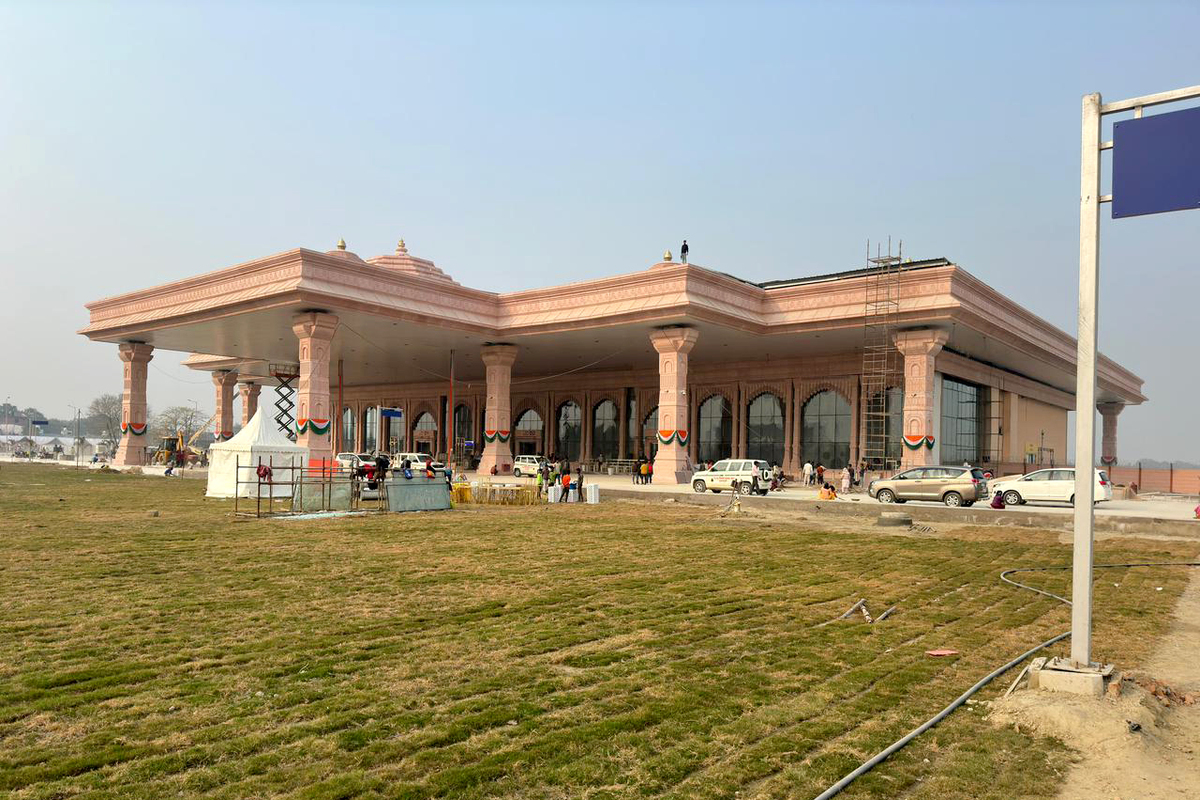Caste rides high in Ayodhya as Ram temple tempo loses its sheen
Though residents of Ayodhya say that over 20 million people reached the Ram temple to have darshan of Ram Lala till date, the local people have no such craze about the issue.
With an additional expenditure of Rs 1,175.97 crore, supplementing the Rs 287 crore received from the Airports Authority of India, the Yogi government in Uttar Pradesh has showcased the remarkable prowess of the second engine, officials here said on Thursday.

Ayodhya Airport (ANI Photo)
The Maharshi Valmiki International Airport in Ayodhya is an outstanding testament to the dynamism of the double-engine government at both the Centre and the state. It has swiftly transformed a compact 178-acre airstrip into an expansive international airport spanning 821 acres in just two years.
With an additional expenditure of Rs 1,175.97 crore, supplementing the Rs 287 crore received from the Airports Authority of India, the Yogi government in Uttar Pradesh has showcased the remarkable prowess of the second engine, officials here said on Thursday.
The Ayodhya International Airport is an outcome of effective coordination between the executive agencies of the central and the state governments. The construction of this international airport started on 2 December, 2021, and within two years, a huge airport came up in Ayodhya.
Advertisement
The Airports Authority of India spent Rs 191 crore on pavement grading and design and build basis in EPC mode and Rs 96 crore on construction of pre-engineered building. Notwithstanding the primary challenge which revolved around land acquisition, the Yogi government achieved a significant milestone by acquiring around 500 acres without encountering any dispute.
Notably, in this 821-acre project, 182 acres were already registered in the name of the Civil Aviation Department whereas 139 acres of government land were acquired from various departments and institutions of the state government, including 23 acres from Avadh University, 25 acres from the education department, 90 acres from Gram Samaj, and 0.0593 acres from the irrigation department.
The biggest challenge before the state government was to acquire the remaining 500 acres (499.68 acres) of private lands. After holding discussions with residents, the state government officials, including the Chief Minister himself, mutually reached a deal on the issue. They not only successfully acquired the private lands but also handed them over to the Airports Authority of India within the stipulated time.
Furthermore, the challenges were not just limited to relocating LT and HT power lines and poles spread across the entire area from runway extension areas. It also involved the removal of quarters and department buildings of Avadh University, shifting 132 kV HT transmission lines from the funnel area, relocating the police post located inside the airport to outside the operational area, removing the hangar and generator room of the Public Works Department and shifting 33 kV and 11 kV power lines.
The timely completion of all tasks such as arranging proper lighting, establishing a fire station, stormwater drainage, widening the runway from 1,500 meters to 2,200 meters, re-carpeting, constructing a 310-meter-long taxi track, building aprons for aircraft, isolation bays, taxiway strips, runway turn pads, crash gates, etc., and developing the terminal building in a single stretch on a 6,000-square-metre area with pre-engineered, pre-fabricated structures, including a common concourse, check-in area, security hold area, baggage collection, electrical works, airport systems, IT systems, and landscaping, was possible only due to the efficient handling by the double-engine government.
Ayodhya, revered as the city of Lord Ram, is heading towards becoming the modern symbol of India’s cultural heritage. The Maharshi Valmiki International Airport will play a pivotal role in this transition by boosting connectivity between Ayodhya and the nation, as well as the world.
Both the central and the state governments are making sincere efforts to restore Ayodhya’s lost glory. The first phase of the airport project has been completed. It features a terminal spanning 65,000 square feet with a capacity for 2 to 3 flights per hour. The airport boasts of a 2,200-metre runway which will not only cater to small aircraft, but also larger ones like Boeing 737, Airbus 319, and Airbus 320. Initially, eight aprons have been constructed.
In the second phase, the runway will be extended to 3,700 meters, allowing all international aircraft, including Boeing 787 and Boeing 777, to land directly in Ayodhya. The airport’s second phase will also include a terminal spanning 5 lakh square feet.
Advertisement